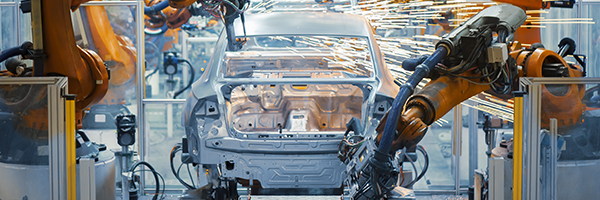All Posts

Last week’s negative sentiment continues into currency, futures trading markets today
Last week’s negative sentiment continues into currency, futures trading market today, Sunday

Saturday Night Quarter says, For the week ahead expect…
more, much more tariff turmoil. The net direction is unclear to me. It depends on which of the possible events this week happen–and what the details are.
Here are the tariff turmoil events that I’m watching in the upcoming week.

Watch my new YouTube video: Quick Pick Tencent
Today’s Quick Pick is Tencent Holdings ADR (TCEHY). Tencent is the world’s biggest computer gaming company and operator of China’s biggest chat platform. I’ve had them in my long term portfolio for a while, but the reason I’m suggesting this stock now is the AI boom happening in China. China is able to build AI models more economically than U.S. AI companies models and Tencent is a big player in the space. Last I checked, they were about 20% undervalued according to Morningstar. If you’re looking for stocks that will move independently from the U.S. market, China’s internet and AI sector is a good place to be.

NASDAQ enters a Bear market; S&P 500 gets close
The NASDAQ Composite closed at 15588 today. That’s a 22.7% drop from record close of 20,173.89 points on December 16, 2024. That puts the index officially in Bear market territory.

March jobs report stronger than expected; Wall Strretwonders if this is the last good report
The U.S. economy added 228,000 jobs in March, the Labor Department reported on Friday. That was more than expected and above the revised 117,000 in February. The unemployment rate rose to 4.2%, from 4.1%, as a result of an increase in the rate of labor force participation. Wage growth, up 3.8% for private-sector workers in the month, beat inflation, which was 2.8% in February. That was down from 4% growth in February. For middle- and lower-wage workers, the growth in wages was 3.9%, also a tick down from February, but still well ahead of inflation.

China matches Trump tariffs, adds new export controls on rare earth minerals
That didn’t take long. On Wednesday President Donald Trump announced new 34% tariffs on China’s exports to the United States. Today, Friday, China matched those tariffs with a 34% rate on U.S. exports to China. And slapped new controls on exports of rare earth minerals critical to everything from electric cars to wind turbines. The new tariffs from China will go into effect on April 10, a day after the higher U.S. tariff schedule is scheduled to take effect.

Emergency Special Report: What to do NOW after the Trump tariff tumble–complete
Today the Standard & Poor’s 500 fell 4.25%, dropping into a correction. The NASDAQ Composite dropped 5.43%, also into a correction. The small cap Russell 2000 lost 6.59%. We don’t have to search for the cause of todays drop: yesterday President Donald Trump announced tariffs with a global minimum rate of 10% and rates on individual U.S. trading partners that included a 20% tariff on the European Union and an additional 34% tariff on Chinese goods. The fear is that the tariff increases will set off a global trade war of retaliation, and that the tariffs will push the United States into either a recession or stagflation. Take your pick about which to fear more. So what do you do NOW? That’s the topic of this Emergency Special Report.

Watch today for my Emergency Special Report: What to do NOW after the Trump tariff tumble
So today U.S. stocks are tumbling after President Trump’s tariff announcement yesterday. What do you do now?

Stocks plunge at the open on Trump tariffs–why and whither?
After weeks of trying to believe that President Donald Trump wasn’t serious about imposing massive tariffs on the rest of the world, Wall Street heard president Trump do exactly that from the Rose Garden yesterday. And today stocks opened down biggly. At 11:20 a.m. New York time, the Standard & Poor’s 500 was down 4.21%. The NASDAQ Composite and the NASDAQ 100 were lower by 5.24% and 4.64%, respectively. The small cap Russell 2000 had tumbled 4.63%. Shares of Apple (AAPL) were down 8.64%. Nike (NKE) was off 11.79%. Nvidia (NVDA) was lower by 6.66%. Why the huge drop?

Tesla deliveries drop worse than expected
Tesla (TSLA0 reported a 13% drop in vehicle sales in the first three months of the year, making it the company’s worst quarter since 2022.

Trump announces his new tariff plan; how will first the financial markets and then consumers react?
My first take away from President Donald Trump’s Rose Garden speech on his new global reciprocal tariff plan is that it worse than expected. In some cases shockingly worse.

Senate Republicans plan for $5.5 trillion in tax cuts; more than House $4.5 trillion
Senate Republicans have unveiled a budget blueprint that includes a $4 trillion (over 10 years) extension of President Donald Trump’s 2017 tax cuts, an additional $1.5 trillion in further tax reductions, and an increase in the debt ceiling of up to $5 trillion. Senate Republicans say they want to ensure that Congress does not need to vote on the debt ceiling again before the 2026 midterm elections
The Republican-controlled House recently pass a budget framework with $4.5 trillion in total cuts. And a $4 trillion incree in the debt ceiling.
Republicans say they are using accounting that assumes the cost of extending the expiring 2017 Trump tax cuts is $0.

Please watch my new YouTube video: Why the Fed is almost certain to be wrong
Today’s video is Why the Fed is Almost Certain to be Wrong. Blame it in lags. Lags make economic forecasting really difficult at the best of times. How long does it take policies like tariffs and tax cuts to actually affect the economy and show up in the data? Right now, we’re dealing with lags from a tariffs that will eventually raise consumer prices. We don’t know when this will hit people in the wallet and really start to affect the economy as a whole. Another problem is the upcoming Trump tax cuts. This will be stimulative to the economy and the Fed may have to look at raising rates again in effort to slow more inflation. If, however, the tariffs slow the economy enough to balance out the stimulative effect of the tax cuts, the Fed would look at lowering rates. There’s really little that monetary policy can do about tariff-caused price increases. White House accounting says the tariffs and tax cuts will balance each other, but it’s tough to say if the money coming out of consumer pockets are the same pockets benefiting from the tax cuts. All this to say, the Fed remains between a rock and a hard place, and has little chance of getting this right and will almost certaInly make a mistake. The question is, How big will the mistake be?

Manufacturing activity turns negative in March
U.S.factory activity contracted in March for the first time this year and prices accelerated sharply for a second month. The Institute for Supply Management’s manufacturing index declined 1.3 points last month to 49, according to data released Tuesday. In this index readings below 50 indicate contraction.

Data point from Europe: how big a hit will U.S. companies take from the Trump tariffs?
By itself, the display stand in the main Vodafone store in Venice doesn’t prove much. But with the context of European anger at U.S tariffs and consumer boycott of U.S. goods in countries like Denmark, I found the empty rack fro Apple’s iPhone and the big display of phones from China’s Xiaomi, well, suggestive.



